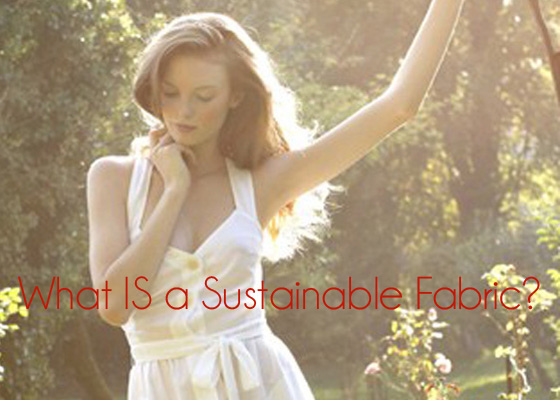
The Higg Index: A New Way to Judge the Sustainability of Your Clothes?
Various companies have been working for the last few years to assess the sustainability of the clothing we buy off the rack (or from the website!). Now Patagonia, WalMart, DuPont, the Natural Resources Defense Council, the EPA, and companies like Nike, Target, H&M, Zara’s parent company, Gap, Adidas, have come together with the Sustainable Apparel Coalition to seriously analyze the fabrics and materials that go into making what we wear (and rarely recycle).
Called the Higg Index, it “allow brands, factories and chemical manufacturers to score the relative sustainability of their products.” The impact categories taken into consideration are: Chemistry, Greenhouse Gases Emissions Intensity/Energy Use, Water/Land Intensity, and Physical Waste.
I was totally, totally shocked by the results. And honestly, wondering if something wasn’t missing from the data (how could hemp be rated so low? And where is organic cotton? Why exactly are down and leather so low-impact, since they come from an animal, rather than straight from the Earth?). I am hoping to speak with someone over at the Coalition, but wanted to get this post out to get the ball rolling.
According to the Wall Street Journal’s early information (I can’t find this table on the Sustainable Apparel Coalition’s website anywhere): “The data below, which will be part of the broader Higg Index, compare the environmental impact of materials used in apparel and footwear on four key measures.”
The top low-impact materials (I’ve extrapolated from the full list) are:
1. Natural Latex Rubber
2. Down
**
8. Leather from grass-fed cows
**
10. Polypropylene Fabric
**
12. Silk
**
18. Cotton
**
21. PLA fabric
22. Lyocell
23. Hemp
**
27. Linen
28. Polyester
**
35. Modal
36. Acrylic
37. Jute
38. Wool
Spandex (sorry 80’s lovers!) was dead-last on the list.
Now, we know that wool is a high-impact material (to make it soft takes a TON of water and chemicals, as well as additional chemicals to remove the lanolin—natural sheep-produced fats that keep the sheepsters waterproof), so while others would be surprised to see that so low on the list, I wasn’t. Wool IS a fantastically long-lasting fabric however (I still wear my grandmother’s wool sweaters from the 50’s and 60’s) and there are folks making organic wool, which is supposed to be a lot lower impact.
But why the heck is modal (which has been advertised to death as an eco-friendly material) so low on the list? And why is cotton ‘better’ than lyocell? And where exactly does organic cotton figure in all of this? While I’m happy to have a serious, hard-core look being taken at fabrics and materials, and look forward to some kind of labelling system, this list raises more questions than it answers, for me.






